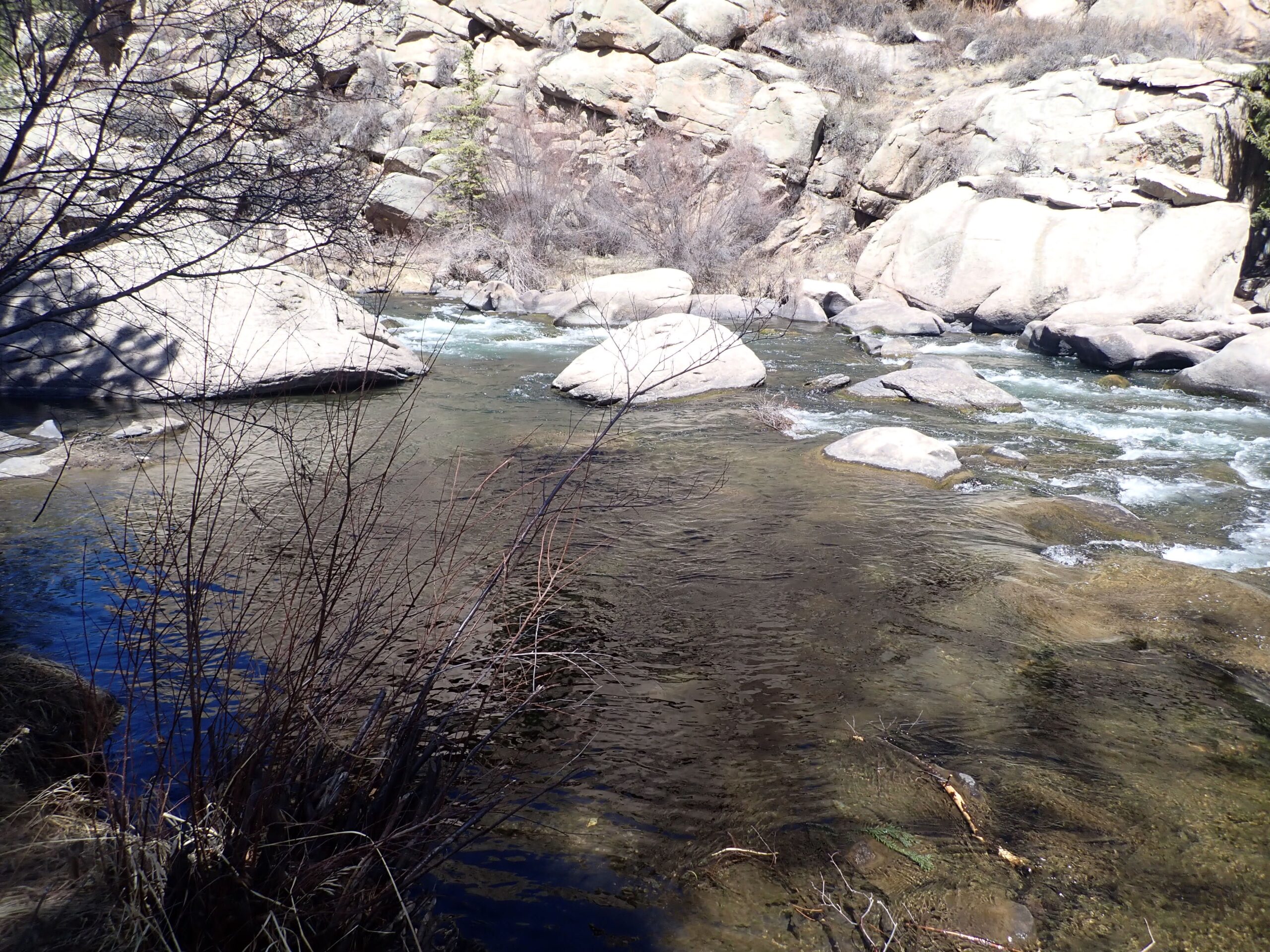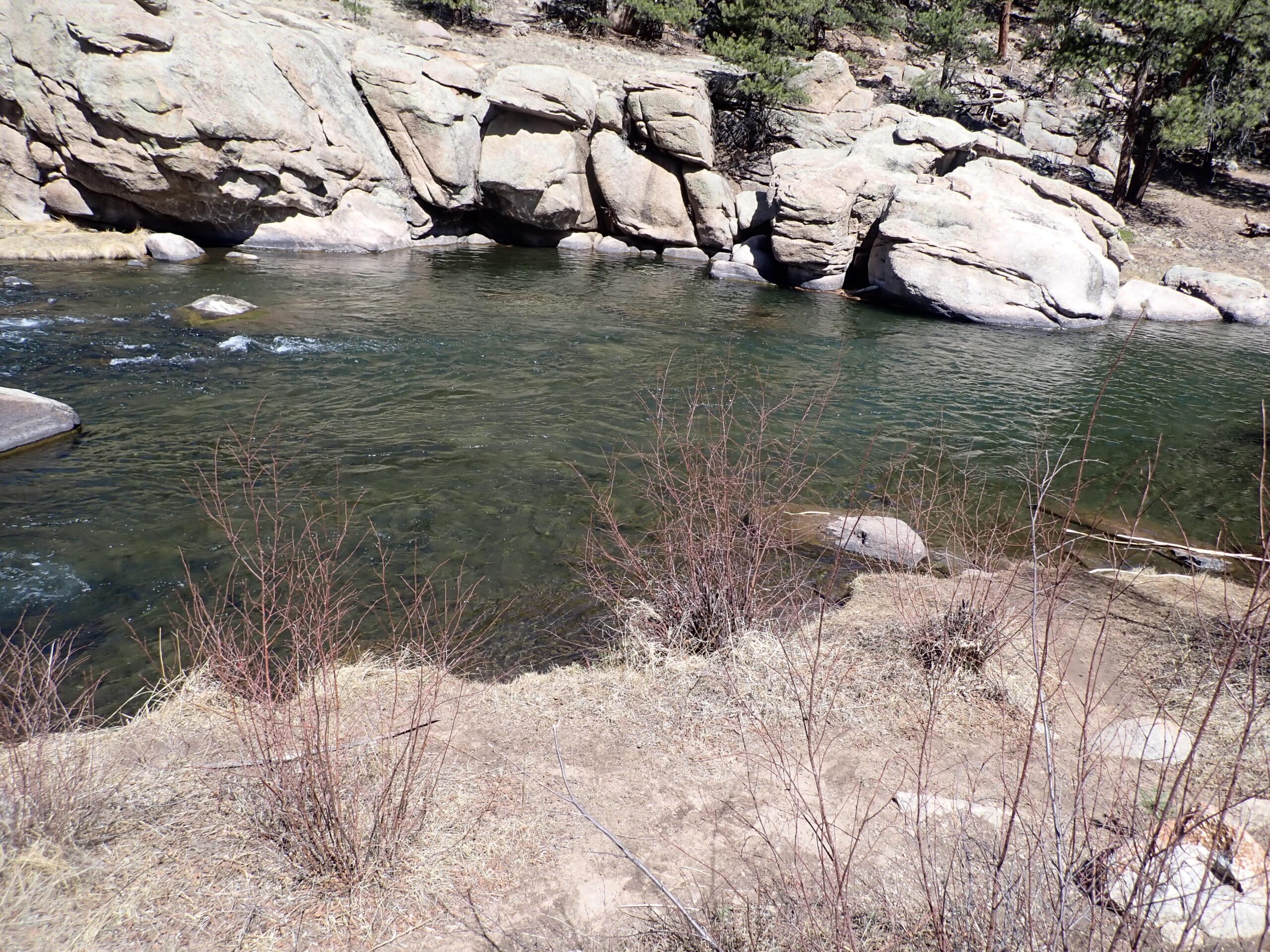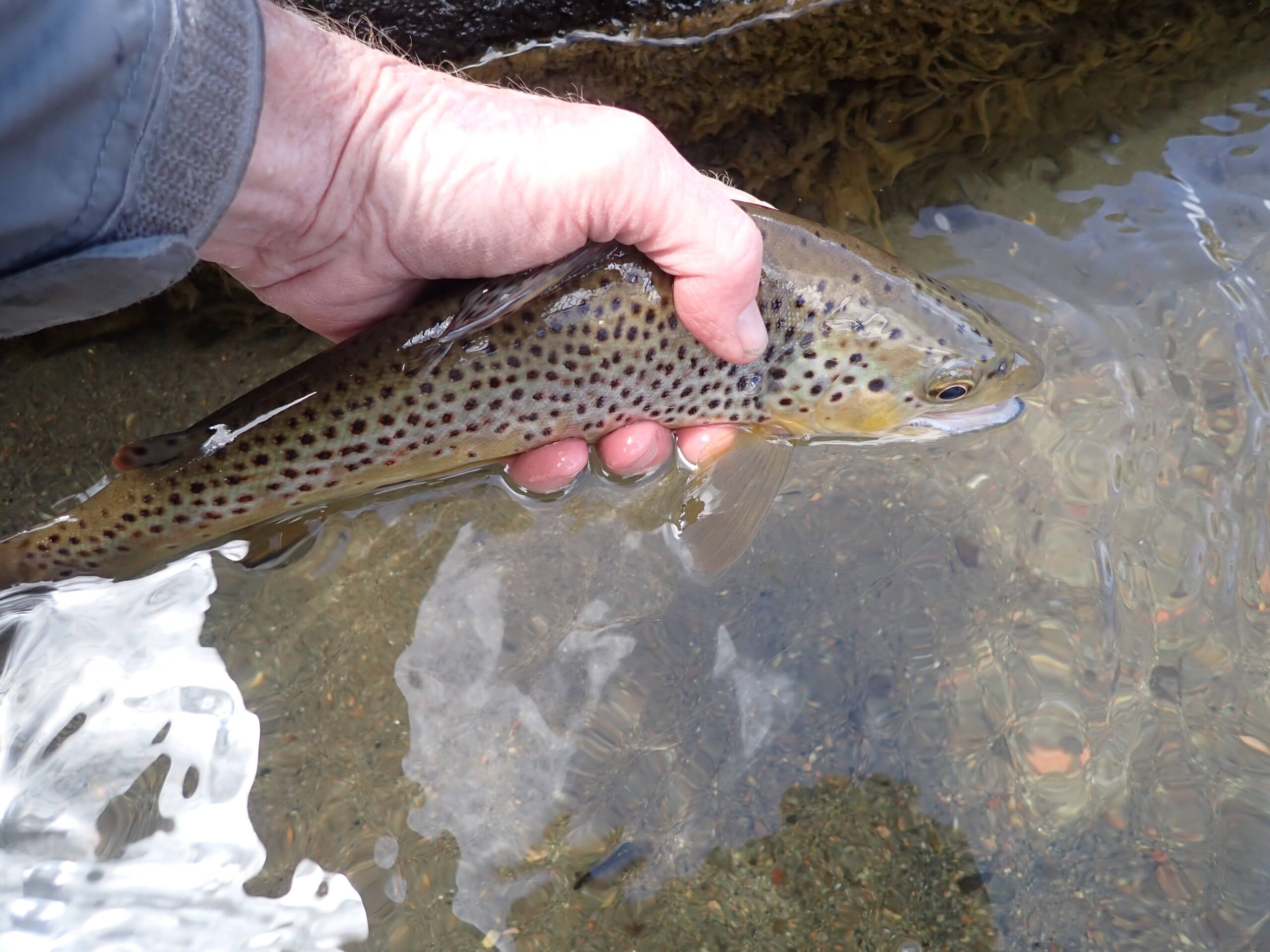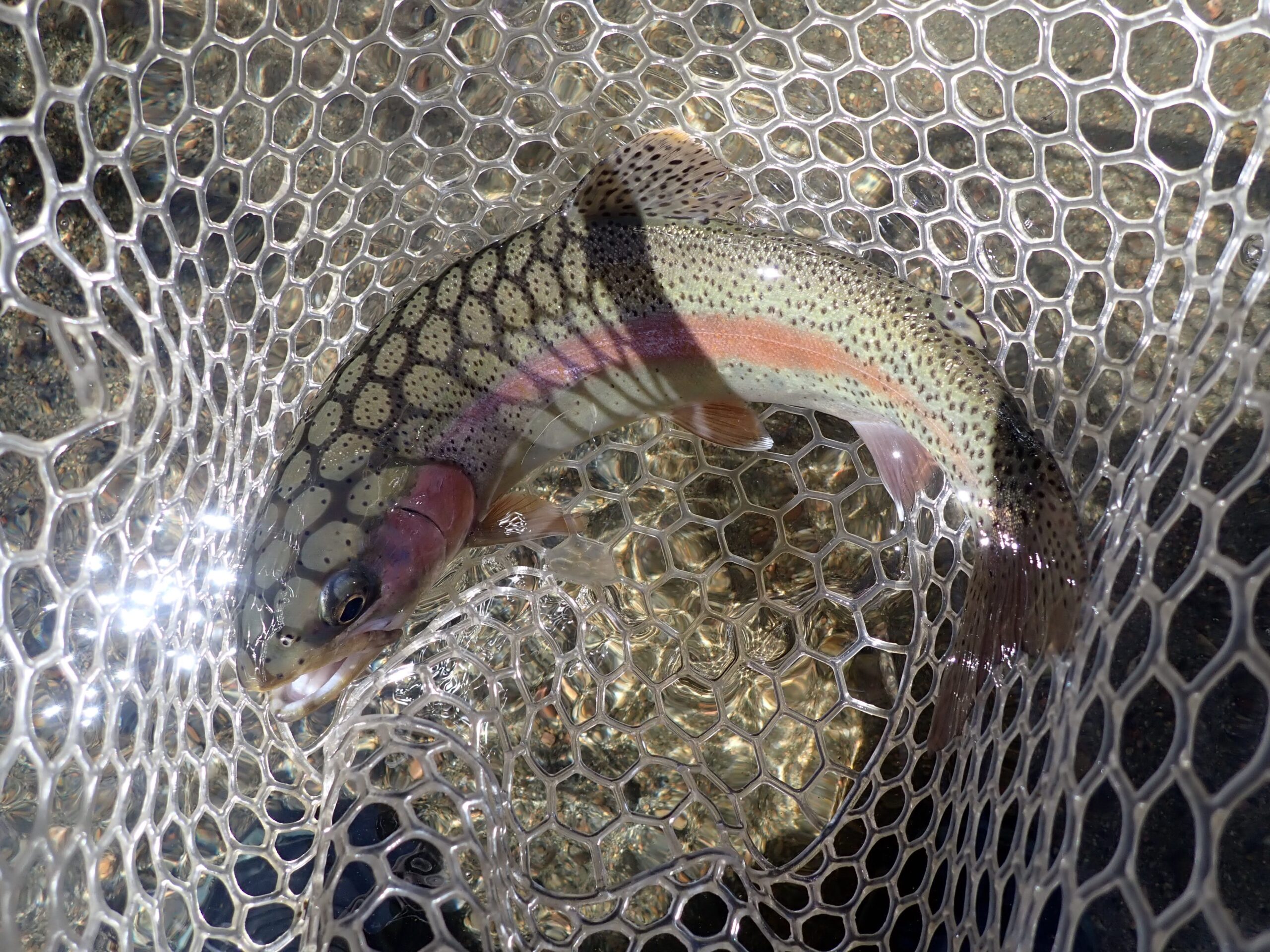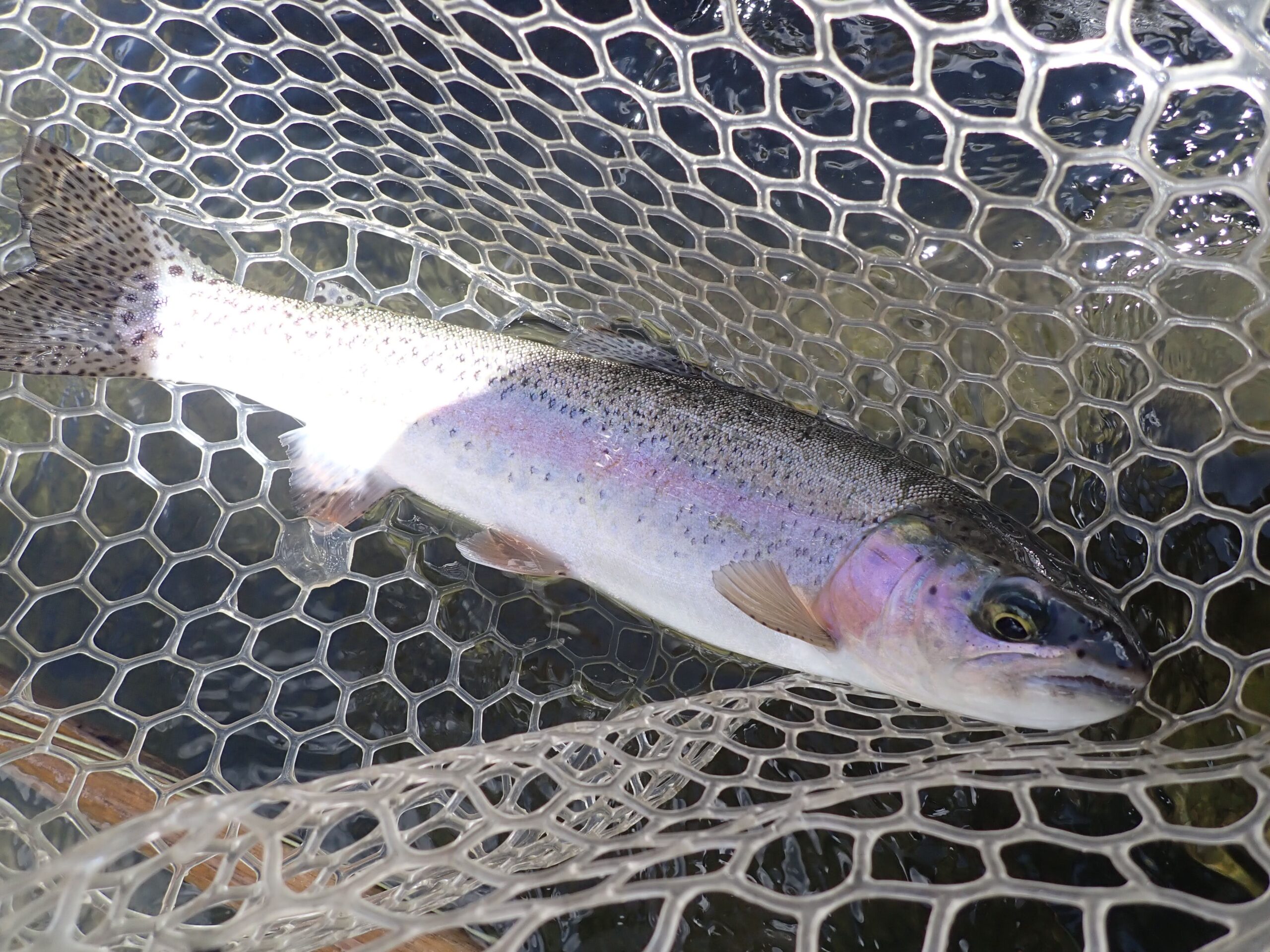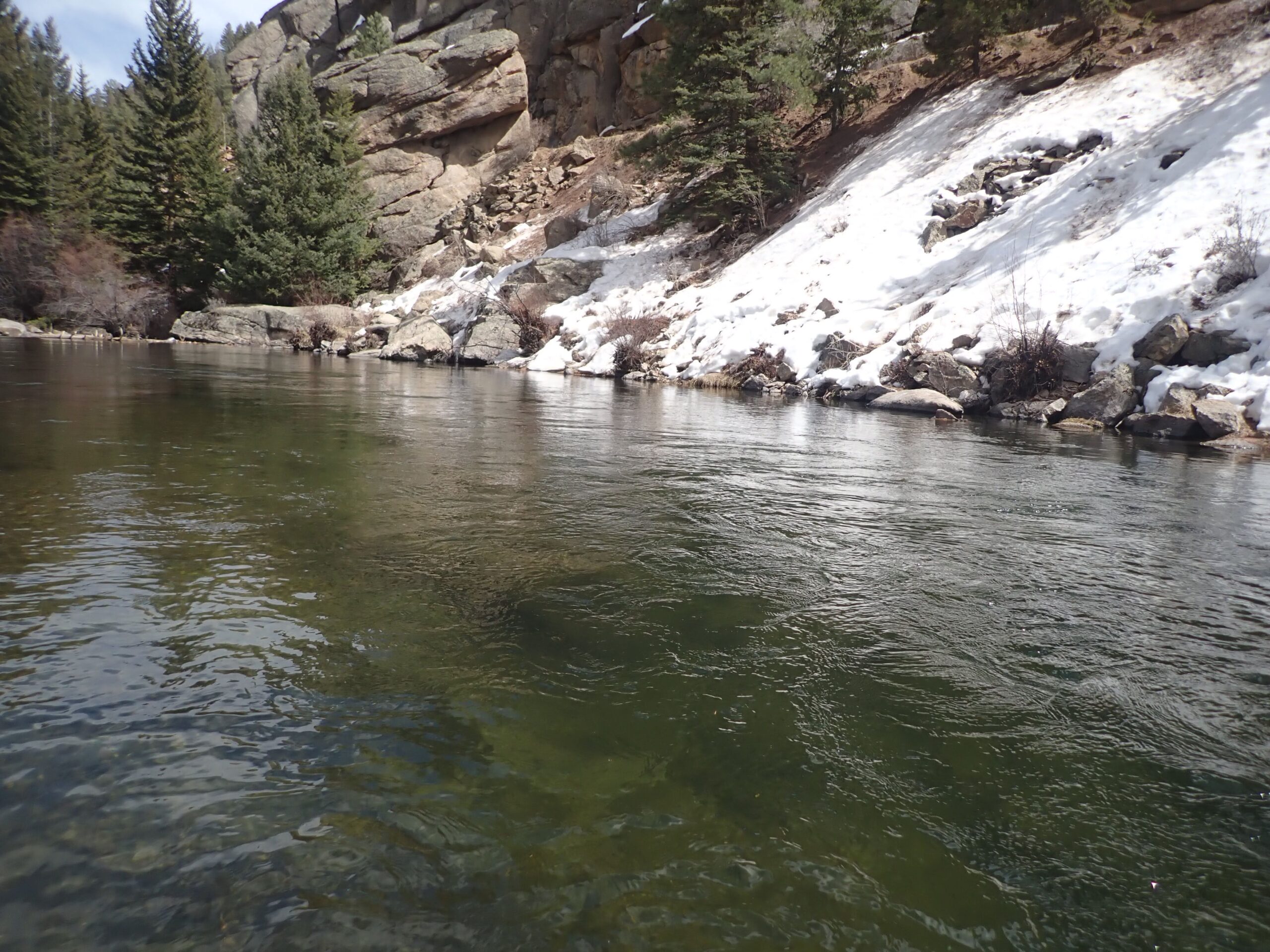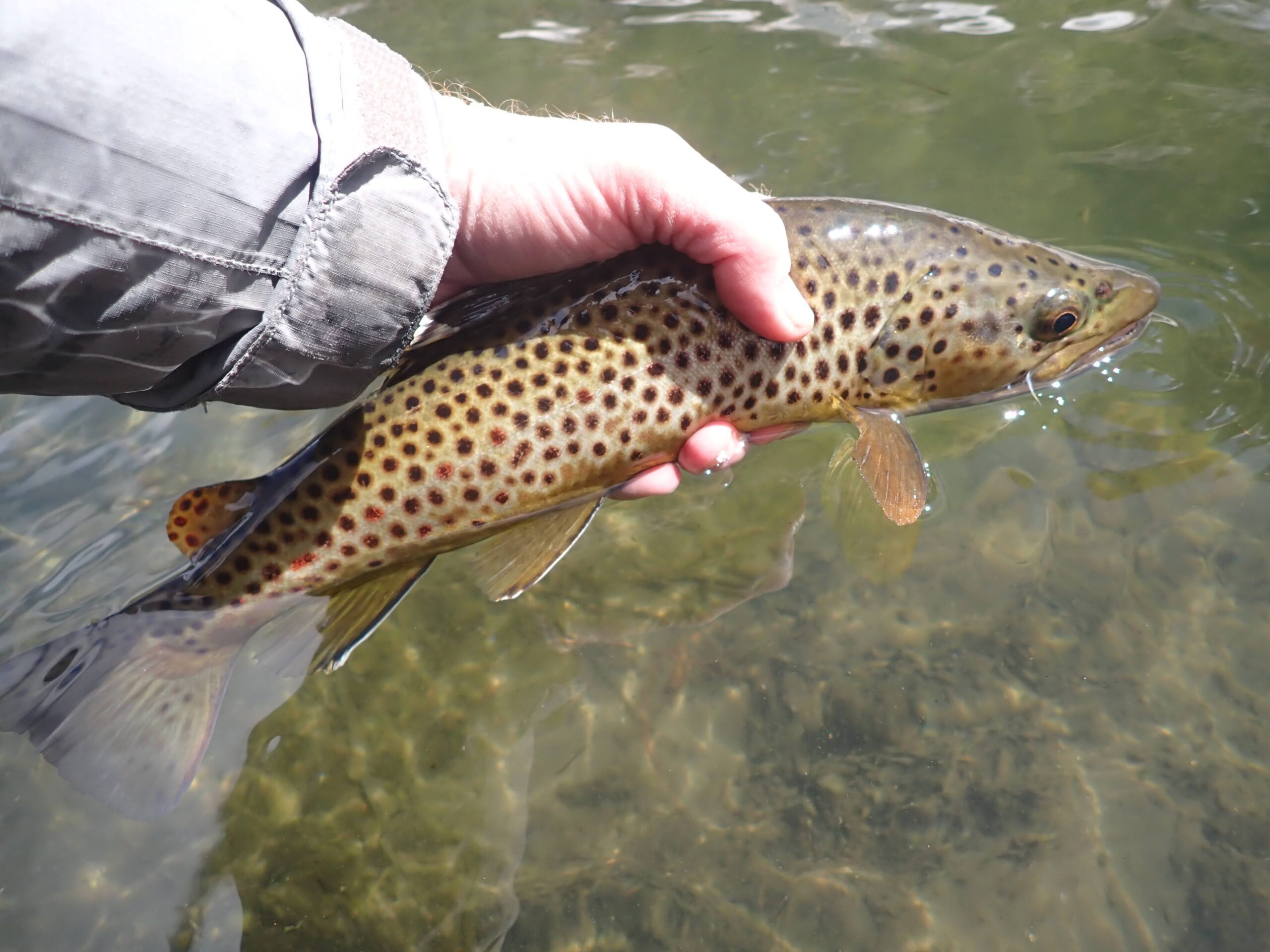Time: 11:30AM – 4:00PM
Location: Eleven Mile Canyon
South Platte River 04/15/2024 Photo Album
The hallmark of outstanding blue wing olive action is nasty weather, and Monday, April 15 was one of those days. I wrapped up our federal and state taxes on Saturday, and I decided to reward myself with a day of fly fishing. I was disgusted with my last visit to Eleven Mile Canyon on 04/03/2024, so I decided to seek redemption. There was some risk to this decision, however, as the weather app forecast wind speeds of 14 to 17 MPH during most of the time I expected to be on the water. The high temperature was projected in the mid fifties, and cloudy skies were predicted to roll in during the afternoon. The cloud cover clinched it, and I accepted the wind risk and made the two plus hour drive to Eleven Mile.
When I reviewed the dashboard thermometer upon my arrival, the temperature registered 54 degrees, and dried grass and riverside vegetation flapped in the regular gusts. I bypassed my long sleeve Brooks undershirt, but I slipped on my North Face light down and covered it with my gray rain shell as a windbreaker. With the possibility of larger than average fish, I assembled my Sage One five weight, and I departed along the dirt road that borders the river in the canyon. After .2 mile I found a reasonably negotiable trail over hard packed snow and descended to the river. I began my day with a yellow size 8 fat Albert, 20 incher, and a supernova baetis nymph. After a solid test period with no action, I exchanged the supernova for a sparkle wing RS2. I covered some very attractive water in the thirty minutes before lunch as well as the first hour afterward with no evidence of trout other than a couple very sporadic slashing rises near my starting point. I was convinced that I was on track for a repeat of April 04/03/2024.
Between 1:00 and 1:30PM I fished the long pool next to the high rock wall on the western bank. I ate lunch next to this section and carefully scanned the water for signs of a blue wing olive hatch, but none appeared. I probed the seams along the deep entering runs and then covered the midsection by dead drifting the nymphs with a sweeping swing at the end. Nothing. I was actually surprised to have the entire pool to myself, but the lack of action may have explained that circumstance.
I moved on and tossed a few casts into some marginal deep pockets along the left bank with no success, and then I skipped another deep run and pool and approached the super big bend pool. I was certain that there were abundant fish in the pool, so a lack of action could only be explained by fly choice or lack of appetite among the fish.
I perched on the nice flat rock that serves as a convenient casting platform along the left bank, and sure enough, I spotted many trout (and suckers) finning in the slow moving deep pool above and next to my position. I observed for a bit, and as I did so, several of the trout that hovered within the upper two feet rose and sipped something small from the surface. I began casting my dry/dropper, and I imparted various types of movements to my drifts including jigging, lifting and swinging; but the targets ignored my efforts and continued to occasionally feed. As time transpired, the frequency of surface rises increased, and I finally decided to commit to a dry fly presentation.
I removed the dry/dropper configuration and added a two foot extension of 5X tippet to my leader, and then I knotted a CDC blue winged olive to my line. The tiny wisp of a fly was difficult to track, but I managed to land three nice trout, two rainbows and a brown in the twelve to thirteen inch range, on the CDC BWO. This was by no means an easy achievement, as I experienced twenty unproductive drifts for each instance, where a fish ate my fly.
The fish in my vicinity seemed to grow wise to my presence, so I moved upstream to another large exposed rock right below the entry of the eastern braid of the river. A large eddy swirled the entering current, and several fish were facing downstream to intercept natural morsels as they swirled by an exposed rock. I switched from the CDC BWO to a soft hackle emerger, and I applied a heavy dose of floatant to the body of the emerger. This change in tactics paid dividends, when I hooked and landed a nice rainbow trout from the area where the current from the east braid met the main river current. As I rested my rod on the large rock to release my catch, I noticed that the slow water along the bank was blanketed with small blue wing olive cripples.
I pursued the super pool for a bit longer, but the sun came out and the rising fish ceased to appear, so I decided to advance up the river beyond the small narrow island that split the river into the east and west branches. When I reached the tip of the island, I slowly waded through the shallow water in the middle of the river and scanned the smooth left channel for signs of feeding fish. After a cautious approach, I was next to the faster moving upper section that fanned out into a nice smooth pool, and a few rises manifested themselves.
I returned to a size 22 CDC blue wing olive, and I began fluttering casts to the middle and far side of the river, but the fish ignored my olive tuft. After quite a few casts, I finally induced a take and landed a nice twelve inch brown trout. I remained in this area from 2:00PM, until I quit at 4:00 PM, and I added three more spunky fighters to my fish count. A fourteen inch brown trout with dark black ink spots was the prize of this time period. During this two hour window the sky darkened and the wind kicked up for long stretches, and these bits of nasty weather provoked some fairly intense feeding from the river residents. I executed hundreds of casts and toggled between the CDC olive and the soft hackle emerger, as I attempted to discover the fly that would induce confident takes. I never really found it, but I did experience six temporary connections, when the trout was barely pricked by my hook point. This indicated to me that my fly was very close to the natural, but something was slightly off. I should add that I added a hippie stomper as the forward fly in a two dry fly arrangement near the outset of the 2-4 hour time frame. Perhaps the one foot leader from the stomper to the baetis imitation was restricting movement a bit, and thus the timid takes and refusals?
As this madness unfolded, I became a very chilled human being. My feet were the worst, and they morphed into icy stumps. The wind blasted frequently, and I pulled my buff up over my ears, and that helped, but the stiffness and cold of my feet and legs progressed upward to my core. Fortunately the sight of ravenously feeding fish allowed me to focus my mind away from discomfort and on to the task of fooling fish.
Finally by 3:45PM I could no longer withstand the cold and wind, so I stripped in my line and hooked the CDC BWO to my rod guide. I traversed the narrow island, crossed to the east bank and climbed a treacherous steep bank to return to the Telluride. The temperature on the dashboard, as I drove north on the access road was 51 degrees. What happened to the high in the mid fifties? It actually got colder as the afternoon progressed, and that does not even address the wind chill.
When the sky darkened and the wind accelerated, the fish feasted. I endured the weather, and my reward was the most intense dry fly fishing of the season thus far. I admit that I was disappointed with the high number of drop offs, but I cannot complain about the long and steady hatch and the hot action between 1:30 and 4:00PM. A longer 5X leader from the indicator dry to the baetis imitation may be the answer to more consistent takes. Hopefully I will get another near term opportunity to test this theory.
Fish Landed: 8
